This article was co-authored by Mohiba Tareen, MD and by wikiHow staff writer, Sophia Latorre. Mohiba Tareen is a board certified Dermatologist and the founder of Tareen Dermatology located in Roseville, Maplewood and Faribault, Minnesota. Dr. Tareen completed medical school at the University of Michigan in Ann Arbor, where she was inducted into the prestigious Alpha Omega Alpha honor society. While a dermatology resident at Columbia University in New York City, she won the Conrad Stritzler award of the New York Dermatologic Society and was published in The New England Journal of Medicine. Dr. Tareen then completed a procedural fellowship which focused on dermatologic surgery, laser, and cosmetic dermatology.
There are 10 references cited in this article, which can be found at the bottom of the page.
This article has been viewed 32,022 times.
Waxing is a great hair-removal strategy—it’s effective, inexpensive, and lasts longer than shaving. But what length should your hair be to wax? We’ve answered this question and more below so you can achieve silky, smooth, stubble-free skin.
Steps
How do you prepare your skin for waxing?
-
1Clean and dry your skin. [7] Exfoliate 24 hours before you wax. The day that you plan to wax, wash your skin with a gentle, fragrance-free cleanser that doesn’t contain oil.[8] Dry your skin gently and avoid moisturizing, as lotion can prevent the wax from gripping your hair.[9] Right before you wax, soak up any excess oil on your skin with baby powder if necessary.[10]
- Don’t wax any area with broken skin, moles, irritation, or sunburn.[11]
- You can also take an over-the-counter pain reliever and/or apply cold packs to your skin a half-hour before you wax.[12]
- Stop using or taking any products that contain retinoids for 2-5 days before you wax. Otherwise, you risk ripping up the skin along with the hair. Ouch![13] Let your waxer know about any other medications you're taking, as well.[14]
-
2Avoid waxing if you're on your period. When you're dealing with your menstrual cycle, your skin is more sensitive than usual because of increased hormone production. For this reason, experts recommend postponing your waxing session by a few days.[15]
- If you want to go ahead with your appointment, let your waxer know that you're on your period and use a tampon or menstrual cup instead of a pad—that'll keep things neater and prevent fluids from interfering with the wax's ability to adhere to your skin and hair.
-
3Steer clear of caffeine and alcohol before you wax. Both caffeine and alcohol increase blood flow, which makes your skin more sensitive and prone to bruising. Hold off on that latte or cocktail until after your appointment.[16]
How do you take care of your skin after waxing?
-
1Soothe your skin with ice and moisturizer. If your skin is still stinging, apply cold packs to help with the pain.[17] [18] If you go to a salon, your esthetician might provide a cream for you to put on your skin after waxing. You can also moisturize with a water- or aloe-based product that won’t clog your pores or hair follicles. [19]
- Wear loose-fitting clothes made of natural fibers to prevent irritation and ingrown hairs.[20]
-
2Avoid harsh products and sun exposure. No suntanning after waxing! It makes your skin extra sensitive, so stay in the shade the day you get waxed.[21] Skip the hot baths or hot tubs, too.[22] Avoid shaving or exfoliating your skin for 48 hours, as that increases skin irritation.[23]
- Don’t apply self-tanner for a full day since waxing opens your pores.[24]
References
- ↑ https://www.aad.org/public/everyday-care/skin-care-basics/hair/how-to-wax
- ↑ https://www.self.com/story/at-home-waxing-tips
- ↑ https://www.aad.org/public/everyday-care/skin-care-basics/hair/how-to-wax
- ↑ https://www.self.com/story/at-home-waxing-tips
- ↑ https://lasvegassun.com/news/2017/jul/30/the-art-of-wax-hair-removal-where-how-often-and-ho/
- ↑ https://www.estheticianedu.org/body-hair-waxing/
- ↑ Mohiba Tareen, MD. Board Certified Dermatologist. Expert Interview. 26 March 2020.
- ↑ https://www.marieclaire.co.uk/life/health-fitness/waxing-at-home-595317
- ↑ https://www.canadianliving.com/style/beauty/article/10-ways-to-make-waxing-less-painful
- ↑ https://www.marieclaire.com/beauty/hair/a1780/waxing-tips/
- ↑ Mohiba Tareen, MD. Board Certified Dermatologist. Expert Interview. 26 March 2020.
- ↑ https://www.aad.org/public/everyday-care/skin-care-basics/hair/how-to-wax
- ↑ https://www.aad.org/public/everyday-care/skin-care-basics/hair/how-to-wax
- ↑ https://www.redbookmag.com/beauty/makeup-skincare/tips/a22673/7-things-to-know-before-getting-waxed/
- ↑ https://metro.co.uk/2017/11/23/can-you-get-a-bikini-wax-when-youre-on-your-period-7101489/
- ↑ https://www.redbookmag.com/beauty/makeup-skincare/tips/a22673/7-things-to-know-before-getting-waxed/
- ↑ https://www.aad.org/public/everyday-care/skin-care-basics/hair/how-to-wax
- ↑ https://www.canadianliving.com/style/beauty/article/10-ways-to-make-waxing-less-painful
- ↑ Mohiba Tareen, MD. Board Certified Dermatologist. Expert Interview. 26 March 2020.
- ↑ https://www.canadianliving.com/style/beauty/article/10-ways-to-make-waxing-less-painful
- ↑ https://www.estheticianedu.org/body-hair-waxing/
- ↑ https://www.canadianliving.com/style/beauty/article/10-ways-to-make-waxing-less-painful
- ↑ https://www.estheticianedu.org/body-hair-waxing/
- ↑ https://www.marieclaire.co.uk/life/health-fitness/waxing-at-home-595317

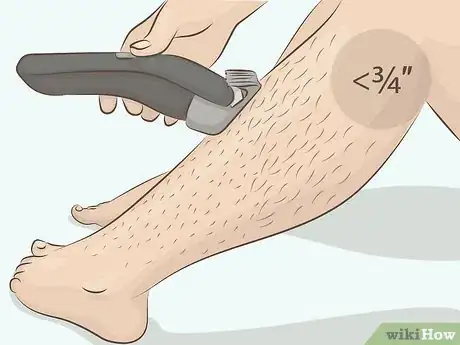
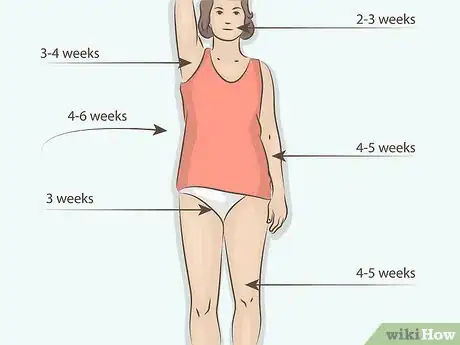

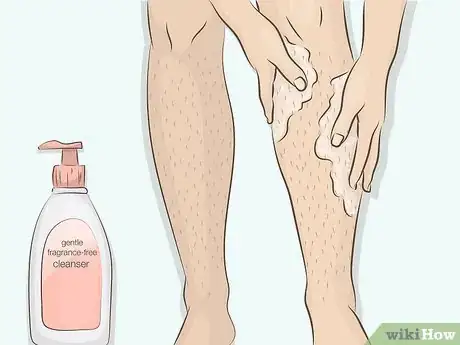



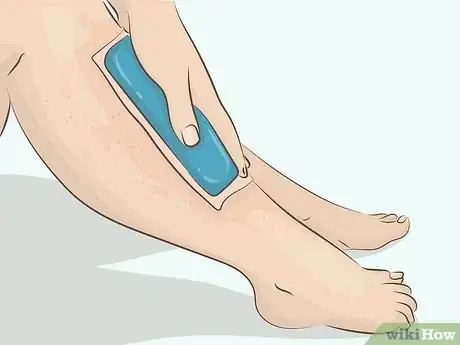
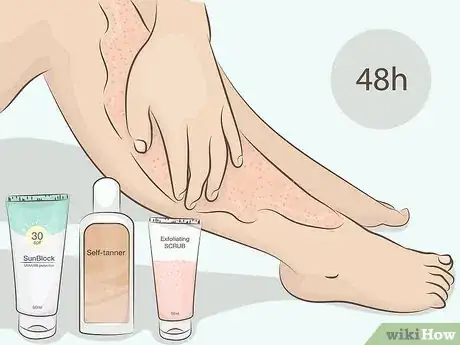




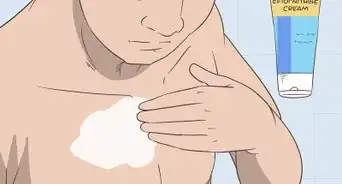



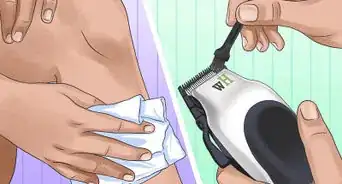

-Step-24-Version-2.webp)












































